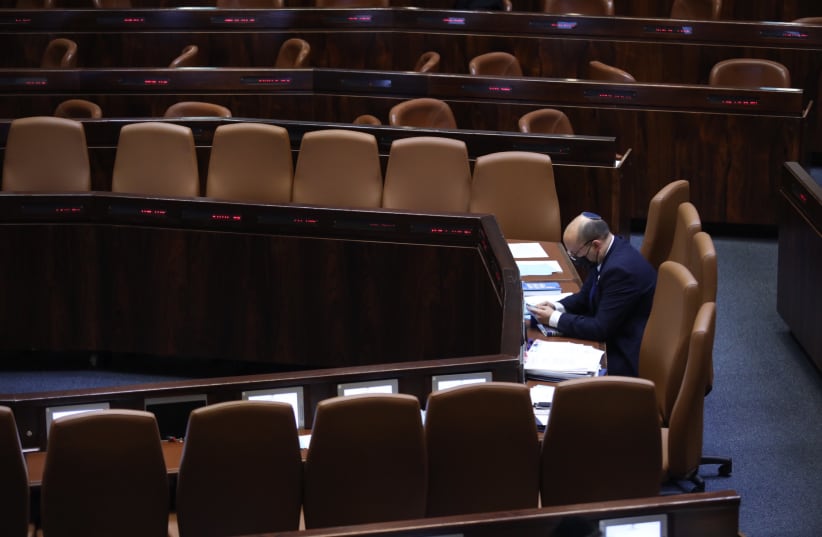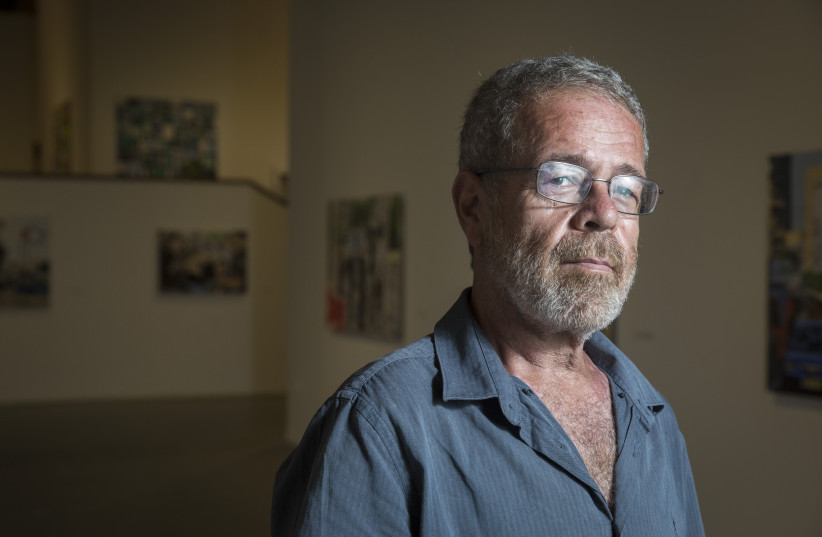Last Thursday, the Tel Aviv District Court decided that a controversial work of art by David Reeb should not be shown in the Ramat Gan Museum of Israeli Art, recently reopened after 15 years of renovations.
The work, which portrays on top a haredi man leaning on his hand against the Western Wall has a Hebrew caption to its left saying “Jerusalem of Gold,” and below, the same haredi man in a mirror image of the one above, with a caption to its right saying “Jerusalem of s***.”
The artist and the Association for Civil Rights in Israel had petitioned the court against the decision of the museum’s board of directors to remove the work at the request of Ramat Gan Mayor Carmel Shama Hacohen, who argued that the work constitutes a slight against large sections of the population, and that the city of Ramat Gan hadn’t constructed an expensive museum, most of which it had funded itself, and will not continue to subsidize it, in order “to expose its children and others to gutter language.”
I have not seen the complete ruling of the court – only those sections that appeared in the media; but my impression is that the court did not address the theoretical issue of the limits of freedom of expression, and who is entitled to make decisions regarding these limits, and on what grounds. In this particular case the question was, Who is entitled to decide to remove a work of art, once the curator of an exhibition has decided to include it in the exhibition?
The exhibition at the Ramat Gan Museum, under the title “The Institution – the Museum and Israelism,” from which Reeb’s work of art was removed, was curated by the chief curator of the museum, Svetlana Reingold. Around 60 Israeli artists are represented in the exhibition, and Reeb himself submitted nine works to it.
In this particular case the district court did not consider the decision on the issue by a large majority of the museum’s board of directors to be a problem, but merely stated that the mayor can express his view but cannot dictate a decision.
This ruling is in keeping with what Supreme Court Justice Noam Sohlberg stated in a case that was dealt with by the Supreme Court last year, to the effect that while a mayor may certainly express an opinion on matters that cause a public uproar, according to the 1983 Museum Law and the principles of free expression, a mayor – i.e., a political person – does not have the authority to intervene in matters relating to museum content.
THE ISSUE of artistic freedom of expression, and the inclination of politicians to try to intervene on political or ideological grounds, is not new in Israel.
The most famous case around this issue concerns a play by Hanoch Levin, Queen of Bathtub, which was performed in the Cameri Theater of Tel Aviv in May 1970.
The play was made up of a collection of dialogues, monologues and singing that presented and criticized the political and social situation in Israel at the time, which Levin viewed as a post-Six Day War bubble of euphoria, which he sought to burst. The play sought to kill many holy cows, and raised loud and even violent outbursts from wide sections in the public, which resulted in the play being taken off the stage after only 19 performances.
Among the various attempts to get the Cameri to take off the play was an approach by the deputy mayor of Tel Aviv to the then-minister of education, Yigal Allon, asking him to cancel the state’s subsidy to the Cameri Theater.
Allon’s reply was that while “pornography and sheer garbage do not stop being what they are when they are wrapped in a wrapping of art and culture,” and that a theater that enjoys public support must be worthy of it, the question is, Who determines what constitutes garbage?
He also expressed his objection to the use of the budgetary whip for censorship purposes. While the government is entitled to insist on what it believes, and fight for it, he added “heaven forbid that [we] use the budgetary whip to shut mouths or dictate tastes, even if [what is offered] is distasteful to us. Unfortunately, I can see no other way to overcome this weakness of democracy – a weakness that is also the source of its power.”
BUT BACK to Reeb. Though I happen to like much of his artwork, which is diverse in its subject matter, style and materials, I strongly dislike the work on Jerusalem, and do not understand what exactly he was trying to say.
In what way does a haredi Jew praying at the Western Wall represent either the “Jerusalem of Gold” or a “Jerusalem of s***”?
If Reeb wanted to say something about the haredim, why tie it to the question whether Jerusalem is made of gold or of s***, and if he wanted to say something about the extreme contrasts of Jerusalem, why tie it to the haredim?
I am sure that each of us has his or her own image of Jerusalem of gold, Jerusalem of s*** (or any other derogatory word one may choose), and some might include the haredim in one or the other category. To me Jerusalem’s gold is the city’s diversity, while bodies like La Familia – the racist fan club of the Beitar Football Club – represent the s***.
In short, I do not understand why the curator of the exhibition chose this particular work of art (or political poster) for the exhibition. Perhaps she received Reeb’s nine submissions as a package deal.
However, I believe that once the work was chosen, the museum should not have decided to remove it, for the exact reason that, 51 years ago, Yigal Allon thought that it would be wrong to stop subsidizing the Cameri Theater.
Incidentally, now Reeb is threatening to withdraw all his nine works from the exhibition, and other artists participating in the exhibition are threatening to do the same.
If all this actually takes place, Ramat Gan’s renovated museum will undoubtedly pay a heavy price in terms of its reputation. But also a decision to leave Reeb’s work of art hanging, despite strong emotions by those who feel slighted by it, would have a damaging effect, even though freedom of expression would undoubtedly have been saved.
I admit that I have not seen the exhibition, but I am told that there are several other controversial works in it. So why did this particular one draw attention?
I have also been told that there have been recent cases of right-wing extremists visiting exhibitions that they suspected might include “objectionable” works of art, in order to create provocations around them.
I do not know whether this is true or not, but if it is true, then the issue is not merely about freedom of expression and its limits, but part of a spreading general cultural war, the effects of which can be clearly detected in the Knesset these days, and which is threatening both our national unity and democracy.
The writer was a researcher in the Knesset Research and Information Center until her retirement, and recently published a book in Hebrew, The Job of the Knesset Member – An Undefined Job, soon to be published in English by Routledge.

